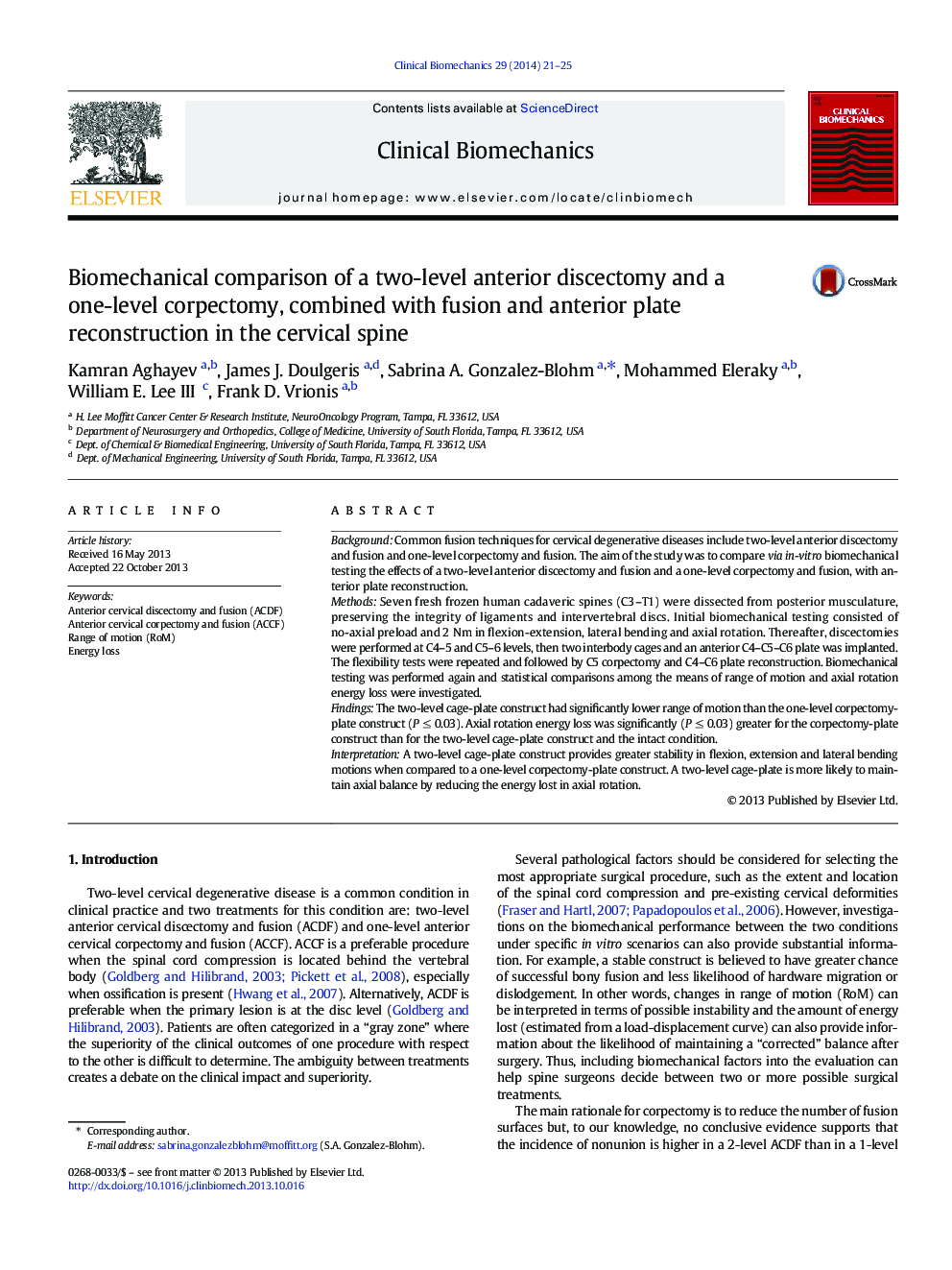| Article ID | Journal | Published Year | Pages | File Type |
|---|---|---|---|---|
| 4050408 | Clinical Biomechanics | 2014 | 5 Pages |
BackgroundCommon fusion techniques for cervical degenerative diseases include two-level anterior discectomy and fusion and one-level corpectomy and fusion. The aim of the study was to compare via in-vitro biomechanical testing the effects of a two-level anterior discectomy and fusion and a one-level corpectomy and fusion, with anterior plate reconstruction.MethodsSeven fresh frozen human cadaveric spines (C3–T1) were dissected from posterior musculature, preserving the integrity of ligaments and intervertebral discs. Initial biomechanical testing consisted of no-axial preload and 2 Nm in flexion-extension, lateral bending and axial rotation. Thereafter, discectomies were performed at C4–5 and C5–6 levels, then two interbody cages and an anterior C4–C5–C6 plate was implanted. The flexibility tests were repeated and followed by C5 corpectomy and C4–C6 plate reconstruction. Biomechanical testing was performed again and statistical comparisons among the means of range of motion and axial rotation energy loss were investigated.FindingsThe two-level cage-plate construct had significantly lower range of motion than the one-level corpectomy-plate construct (P ≤ 0.03). Axial rotation energy loss was significantly (P ≤ 0.03) greater for the corpectomy-plate construct than for the two-level cage-plate construct and the intact condition.InterpretationA two-level cage-plate construct provides greater stability in flexion, extension and lateral bending motions when compared to a one-level corpectomy-plate construct. A two-level cage-plate is more likely to maintain axial balance by reducing the energy lost in axial rotation.
